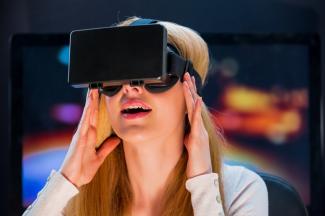
Instructions
Do the preparation task first to help you with the difficult vocabulary. Then read the article and do the exercises to check your understanding.
Dr Llyr ap Cenydd is a computer scientist but he draws his inspiration from the natural sciences. ‘I’ve always been fascinated how animation works in a game, how to bring characters to life. I couldn’t decide whether to be a biologist or a computer scientist.’
His latest app is called Ocean Rift and it is the latest in a long line of animations which have been influenced by science. Disney animators, for instance, were encouraged to visit zoos or even bring animals into the studio, to help make their animations more lifelike. But Llyr believes his app takes realism to a new level. ‘It’s about making virtual life,’ he explains. ‘For example, in Ocean Rift the animals are not animated like in a Disney movie – it actually swims, it flicks its tail, opens its mouth, blinks.’
Challenges
Modelling the unique behaviour of each animal was no easy task. Small animals like eels swim past you, but larger ones such as dolphins look at you and you can see their eyes move around. For Llyr, the dolphin was the most challenging creature to recreate because when you enter their habitat, they swim right up to you. He says, ‘you feel like they are invading your personal space as they are more than your arm’s width close to you. What happens then? Do they stay back? How often do they come up to you? It depends on how friendly it is.’
The mobile format also presented a challenge. Ocean Rift has been released for Samsung’s Gear VR, a virtual reality headset for smartphones. ‘I am used to working with £2,000-£3,000 machines that drive everything,’ he explains. ‘The Gear VR runs off a smartphone and not only are they tiny computers, there’s nowhere for the heat to go. You can’t put a fan on one’. Without the processing power and cooling systems of powerful desktop computers, the app needed optimisation to make a mobile version possible.
New habitats
Samsung are releasing the Gear VR Innovator Edition in December and Llyr is already working on the next edition. ‘It is divided into habitats, the dolphin habitat, whale one and so on and I will be adding more habitats.’ And because he has done the hard work of making it work on a smartphone, when he transfers it back for bigger devices it can be more elaborate. ‘It means I can have tens of thousands of fish all swimming around on the computer or on a PlayStation or whatever.’
If you're interested in science check out the British Council's science magazine called Cubed.
Would you like to swim with animals in VR?

Comments